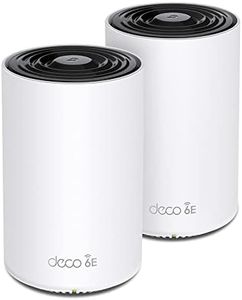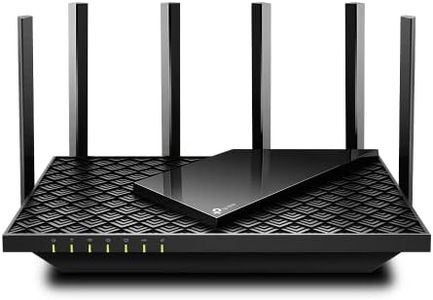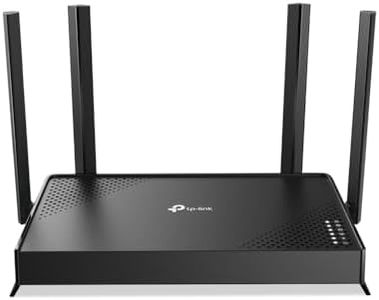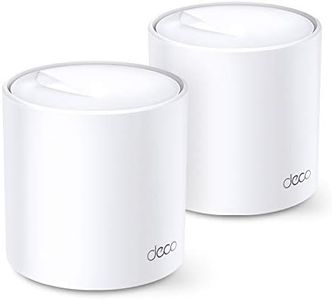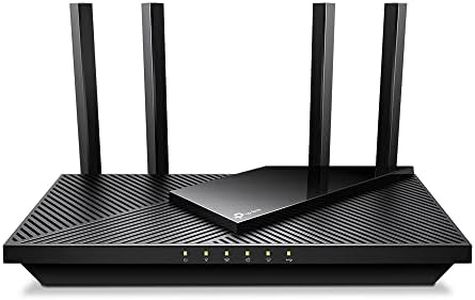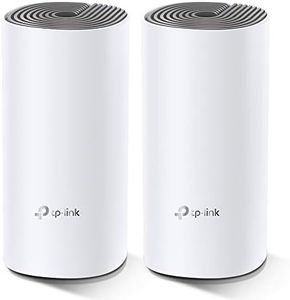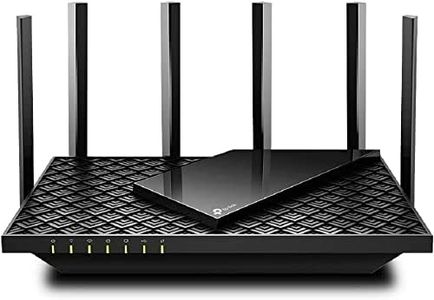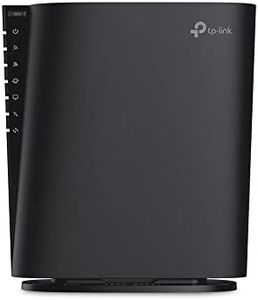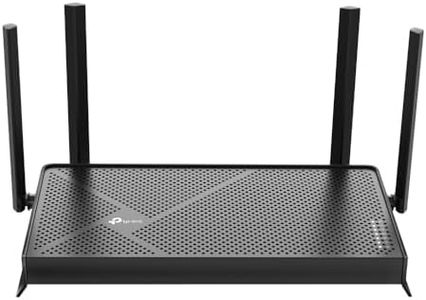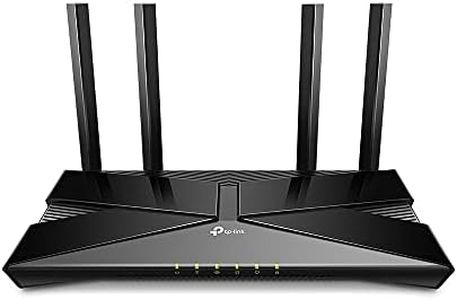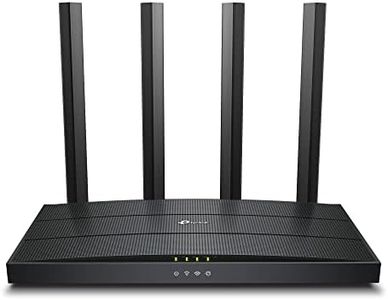We Use CookiesWe use cookies to enhance the security, performance,
functionality and for analytical and promotional activities. By continuing to browse this site you
are agreeing to our privacy policy
10 Best Tp Link Wi Fi Routers
From leading brands and best sellers available on the web.Buying Guide for the Best Tp Link Wi Fi Routers
Choosing a Wi-Fi router can feel overwhelming due to the many options and confusing terms. The best way to pick the right router is to first think about the size of your home, how many devices need to connect, what types of activities you use the internet for (such as browsing, streaming, or gaming), and whether you want any extra features like parental controls or app-based management. Understanding the key specifications will help you match a router to your real needs without over- or under-buying.Wi-Fi Standard (802.11ac, 802.11ax, etc.)The Wi-Fi standard refers to the generation of wireless technology the router supports, like 802.11ac or 802.11ax (also called Wi-Fi 5, Wi-Fi 6, etc.). These standards dictate the speeds and features you can access. Wi-Fi 5 (802.11ac) is very common and suitable for regular streaming and browsing, while Wi-Fi 6 (802.11ax) offers higher speeds, better efficiency, and improved handling of lots of connected devices, making it ideal for busy homes or those who use their internet for demanding tasks. To pick the right one, consider if you have many new devices that support Wi-Fi 6 or do heavy online activities. Otherwise, Wi-Fi 5 suffices for most basic uses.
Speed Rating (AC1200, AX1800, etc.)Speed ratings like AC1200 or AX1800 indicate the theoretical combined maximum speeds across the router's bands (2.4GHz and 5GHz). These numbers look impressive, but real-world speeds are usually lower and depend on your internet plan and home setup. Lower numbers (like AC750) are fine for small homes and light use, while mid-range (such as AC1200 or AX1800) fits medium use with streaming and some gaming. Higher numbers are only needed if you have super-fast internet and many devices. Use your internet habits and number of users as your guide.
Number and Type of Bands (Single, Dual, Tri-Band)Routers come with one, two, or even three 'bands'—these are separate pathways for your devices to use. Single-band routers operate only on 2.4GHz, which is slower but has longer range, while dual-band routers use both 2.4GHz and 5GHz, offering a balance of range and speed. Tri-band routers add an extra 5GHz band to handle even more devices and reduce congestion. If you have many devices or do heavy streaming and gaming, dual- or tri-band is helpful. For simple needs or a small space, a single band might suffice.
Coverage RangeCoverage range tells you how large an area the router’s signal can cover (measured in square feet or meters). A higher range is important for multi-story homes or larger spaces, while small apartments can use routers with less coverage. Remember, walls and floors can affect this, so if you have a lot of obstacles, look for routers that call out better coverage or consider mesh systems for very large homes.
Number and Type of PortsRouters come with Ethernet ports for direct-wired connections to devices like computers or consoles, and sometimes USB ports for storage or printers. More Ethernet ports are useful if you have several devices that can benefit from a stable wired connection. USB ports are handy if you want to easily share files or connect a printer across your network. Count the devices you plan to wire in, and make sure the router has enough ports for your needs.
Security FeaturesSecurity features help keep your network safe from outsiders. Look for WPA2 or WPA3 encryption, which is the standard. Some routers also offer extra features like guest networks, parental controls, and automatic updates. If you have kids, want to separate guest access, or simply want peace of mind, choose a router with robust and easy-to-manage security options.
Management Interface (App Control, Web Portal)The management interface is how you set up and control your router’s settings. Many routers now offer app-based setup and management that’s user-friendly and allows easier monitoring on your phone, while others rely on a web portal you access from a browser. If you prefer simplicity and mobile control, look for routers with a dedicated app. If you’re more hands-on and technical, either method works.

